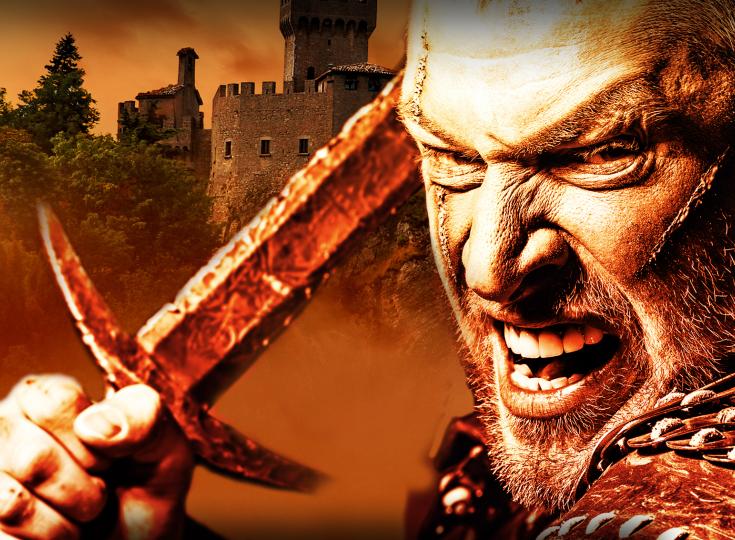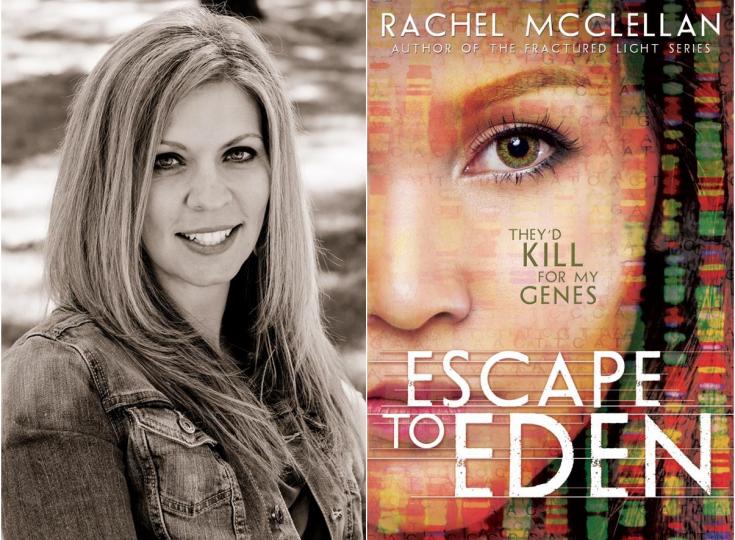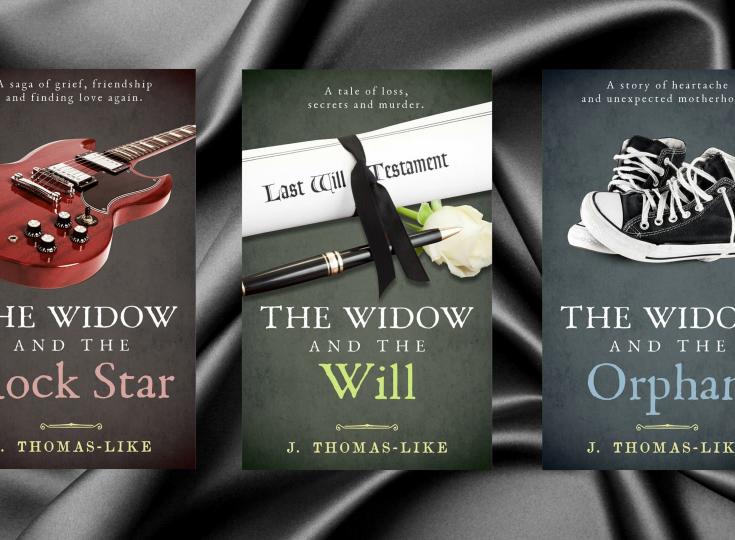Allan Batchelder - Fantasy, Epic Battles and Flawed Heroes

When Allan Batchelder isn't writing, he is thinking about how to bring fantasy worlds with epic battles and flawed heroes to life through his writing. Something he is quite good at, judging by his book, Steel, Blood and Fire. As our author of the day, Batchelder talks about his love of Shakespeare, sentient swords and why his heroes are not all that good.
Please give us a short introduction to Steel, Blood and Fire
It’s a stand-alone book, but also the first in a five-book series. I wanted to do my own take on a rather classic theme in the fantasy genre, which I won’t spoil here. But the protagonist, Tarmun Vykers, is as much Clint Eastwood’s “Man-with-No-Name” as he is Conan the Barbarian, a very rough-edged “hero” who must battle an insane and powerful villain.
Tell us about Tarmun Vykers. How did you come up with his character and what makes him so extraordinary?
On my website, www.immortaltreachey.com, I have a slideshow of all the characters who’ve inspired Vykers, from Yojimbo to Achilles, and from Beowulf to Muhammad Ali. He’s arrogant, like Odysseus, and mercurial, like any of Bruce Lee’s characters. I wanted a hero who could go toe-to-toe with the gods, but who also possessed serious flaws and more than a little ambiguity.
How has your work as an actor and teacher influenced your writing?
One of the earliest reviews I got was that Steel, Blood & Fire read like a movie, because it was rather heavy on dialogue. I’ve tried to balance things out in the subsequent books, but dialogue is just something I “hear” constantly. My characters are always chattering away with each other (and me) in my mind. I’ve really enjoyed sharing that part of their make-up.
There is also a character who’s an actor, so there’s quite a bit of acting-related humor. Finally, as you suggest later, all of my books are full of little references to Shakespeare. They are also chock full of other literary Easter eggs that no one ever mentions. Now, that’s curious!
As for teaching, well, I’ve had to pull a few of my punches with regard to sex or violence because I need to keep my day job! I want to be able to talk to my students as someone who knows a bit about writing and publishing, but I don’t want to put too much attention on my books. When they graduate, they’re welcome to dive in!
What inspired you to include the Sword with No Name in your story?
Sentient swords have been a part of the fantasy genre since the beginning. But I have been particularly inspired by the way Steven Erikson writes about his characters’ various swords. They are not all gaudy, opulent or rune-etched, but they are all entities with sometimes unknowable agendas.
Do you have a set of rules for your world? Is there a process you go through that helps define these?
I do, but I don’t want to give too many away here, as revealing them through the narrative is part of the fun. I think most fantasy fans understand, though, that magic (for example) has to have rules, otherwise it’s impossible to accept. In Tarmun Vykers’ world, magic has a definite cost.
How do you go about creating such epic battle scenes?
The first time I saw Peter Jackson’s Lord of the Rings movies, I said, “Yes, that’s it!” He really captured what epic battles should be -- and are, in the books of Glen Cook, Steven Erikson and others. And, at the risk of sounding like a broken record, Shakespeare’s a genius at massive battle scenes. Check out his history plays and see if I’m wrong.
Your book contains several Shakespeare references. Why?
When I was eleven, my dad took me to see Henry V at the Oregon Shakespeare Festival. I was regularly dragged to the opera, so I wasn’t hopeful. But we had seats in the third row, center, and when Powers Booth came out on stage, I was sold for life. The swordfights, the canon fire, the sprawling, larger-than-life quality of it, wow!
Of the rich cast of characters in your book, which did you find the most challenging to create?
I feel like I’ve spent my life surrounded by women – my mother, my three sisters (I call them “The Weird Sisters”), and my wife. And you might think that gives me some special insight into women, but, no, I find them impossibly complex. I struggle and strive to do them justice through Aoife, Arune, Mardine and others, but I’m never comfortable. Maybe no writer is every comfortable, anyway. But I do take some solace in the fact that each of my female characters is someone’s favorite!
In Steel, Blood and Fire, the heroes are not all that good (Tarmun would have been a villain in any other book) and the bad guys aren't pure evil either. Why did you pick this approach?
I can’t pinpoint the book or author, but sometime in the past thirty years or so, fantasy grew up, evolved from offering binary worlds of absolutes in which characters are one thing or another to giving us deeper, more nuanced characters. Jaime Lannister of Game of Thrones fame is a perfect example. When we first meet him, we despise him. But George R. R. Martin makes it impossible for us to maintain that hatred for long, and eventually we might even come to admire Jaime.
Tell us a bit about your writing habits. Do you have a favorite writing spot? Do you prefer writing during the day or night? Pen or computer?
I do most of my writing on my PC at home. There’s a window just to the left of my monitor, and I spend a shameful amount of time staring at the sunset’s reflection on the western wall of the church up the block. I typically try – and often fail – to write five hundred words a night. But I fall behind and have to put in a few thousand on the weekend, if possible. And yes, night is my favorite time to write. The day’s concerns are past, and I’m free to imagine.
Did you work out the entire plot of your book before you started to write?
When I first started, I quickly learned there were “Planners,” like J.K. Rowling, and “Pantsers,” like Lois Lowry (by her own admission). I’m a Pantser. I know the overall plot, and I know the beginning and ending and several of the show-stopping bits, but a lot of things come to me spontaneously as I write. Spirk’s magic stone, for instance, popped into my head out of nowhere and quickly became one of my favorite parts of Steel, Blood & Fire.
Besides writing, what other secret skills do you have?
Well, I’m an actor. Nowadays, I mostly stick with commercials, but I’d love to return to the stage if a) I could find the time, and b) the right role came along. I was also a stand-up comedian for nine years, but it’s really a young person’s game, with all the travel, bar food, and bad motel cable.
What are you working on right now?
I am wrapping up Book Four (the penultimate book) of the Immortal Treachery series. It should be out by Christmas.
Where can our readers discover more of your work or interact with you?
Again, there’s a lot of great stuff at www.immortaltreachery.com. But folks can also follow me on Twitter, at https://twitter.com/TarmunVykers or on Facebook at https://www.facebook.com/SteelBloodFire/ or Pinterest athttps://www.pinterest.com/tvyke/steel-blood-fire/ I’m on Goodreads, too.
I’ve got Instagram and Snapchat pages, too, but I’m still learning how to use them!





